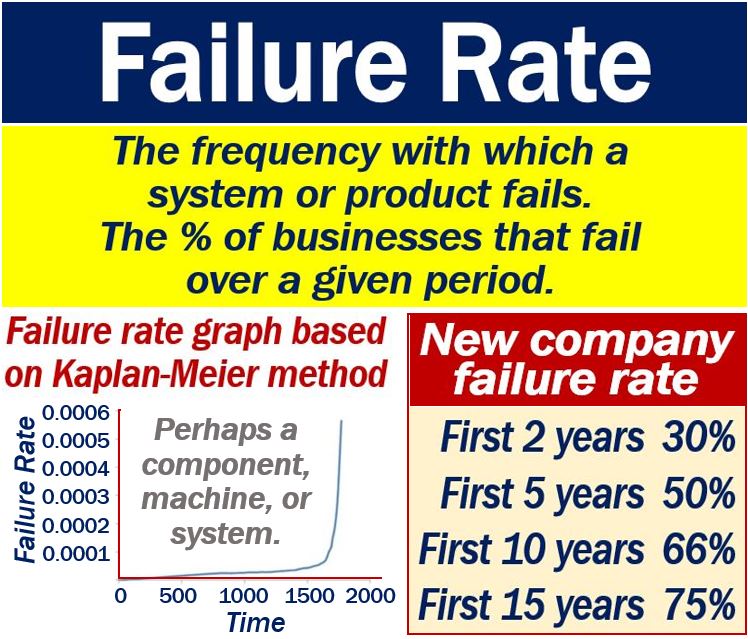What is failure rate? Definition and examples
Failure Rate refers to how often something fails, such as a component or system. We usually express it in failures per unit of time, i.e., failures per hour, day, week, etc. The term is common in reliability engineering. In reliability engineering and many other sectors, the Greek letter λ (lambda) means ‘failure rate.’
Systems’ or components’ failure rates vary during their lifetime. Typically, rates decline as people detect and fix problems. However, they eventually rise due to deterioration.
The incorporation of advanced diagnostics and predictive maintenance technologies has enabled earlier detection of potential failures, thereby further reducing the occurrence of unexpected breakdowns.
Between the initial and final phases, failure rates are usually steady.
Failure rate – age
A system’s or product’s failure rate typically depends on time. The rate varies over its life cycle. Do not confuse life cycle in this context with ‘product life cycle.’ The term ‘product life cycle’ refers to the four stages that products go through during their commercial lifetime. ‘Product life cycle’ is a marketing term.

The terms ‘instantaneous failure rate’ and ‘hazard rate’ mean the same as ‘failure rate.’
Failure rates of automobiles, for example, are much greater during their tenth year than their first or second year.
You don’t expect to replace a new car’s exhaust pipe, for example, in its first or second year. On the other hand, you expect failures if your car is ten years old.
Mean time between failures
In practice, most people report the mean time between failures (MTBF, 1/λ) rather than the failure rate. This is especially the case for high-quality components or systems.
Regarding the mean time between failures, Wikipedia writes:
“This is valid and useful if the failure rate may be assumed constant – often used for complex units/systems, electronics – and is a general agreement in some reliability standards (Military and Aerospace).”
Additionally, MTBF can be a crucial benchmark in industries where safety or uptime is paramount, guiding maintenance schedules and design improvements.
Small business failure rate
Over the past fifty years, there have been many studies on new or small companies’ chances of surviving or failing. Small business failure rates refer to the percentage of businesses that fail over specific periods.
According to a 1996 article by John Watson and Jim Everett, studies had shown an inverse relationship between business size and failure risk.
The Journal of Entrepreneurial Finance published Watson’s and Everett’s article – ‘Small Business Failure Rates: Choice of Definition and the Size Effect.’
The authors, from the University of Western Australia, however, stressed that reported failure rates depended heavily on the study authors’ definition of failure.
According to the Small Business Administration (SBA), thirty percent of new companies do not last more than two years. In other words, the failure rate for new companies is 30% at 24 months of being open.
The SBA adds that failure rates continue rising over time. For example, during the first five years, fifty percent of new companies fail. Sixty-six percent fail within a decade.
In fact, just one quarter, i.e., 25%, of companies reach the age of fifteen.
Video – What is Failure Rate?
This video presentation, from our sister channel on YouTube – Marketing Business Network, explains what the meaning of ‘Failure Rate’ is using simple and easy-to-understand language and examples.

